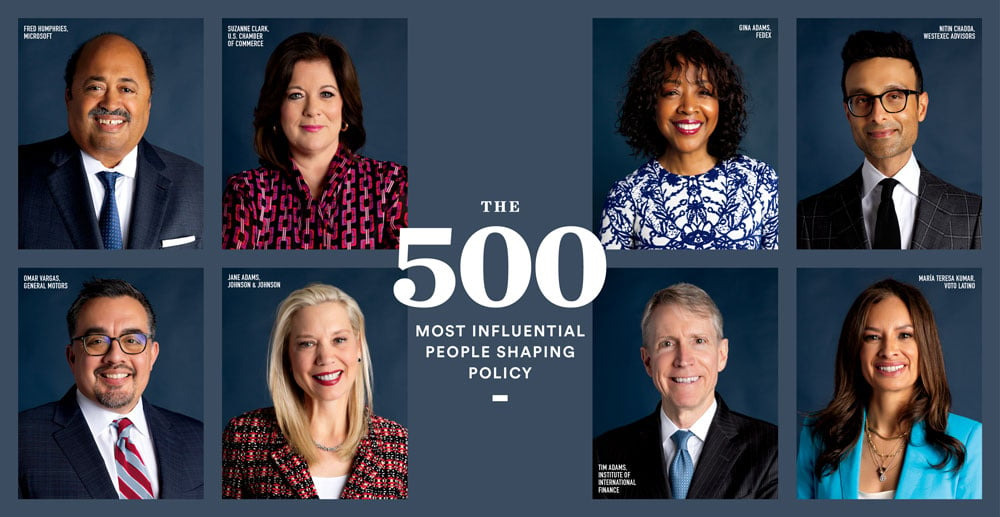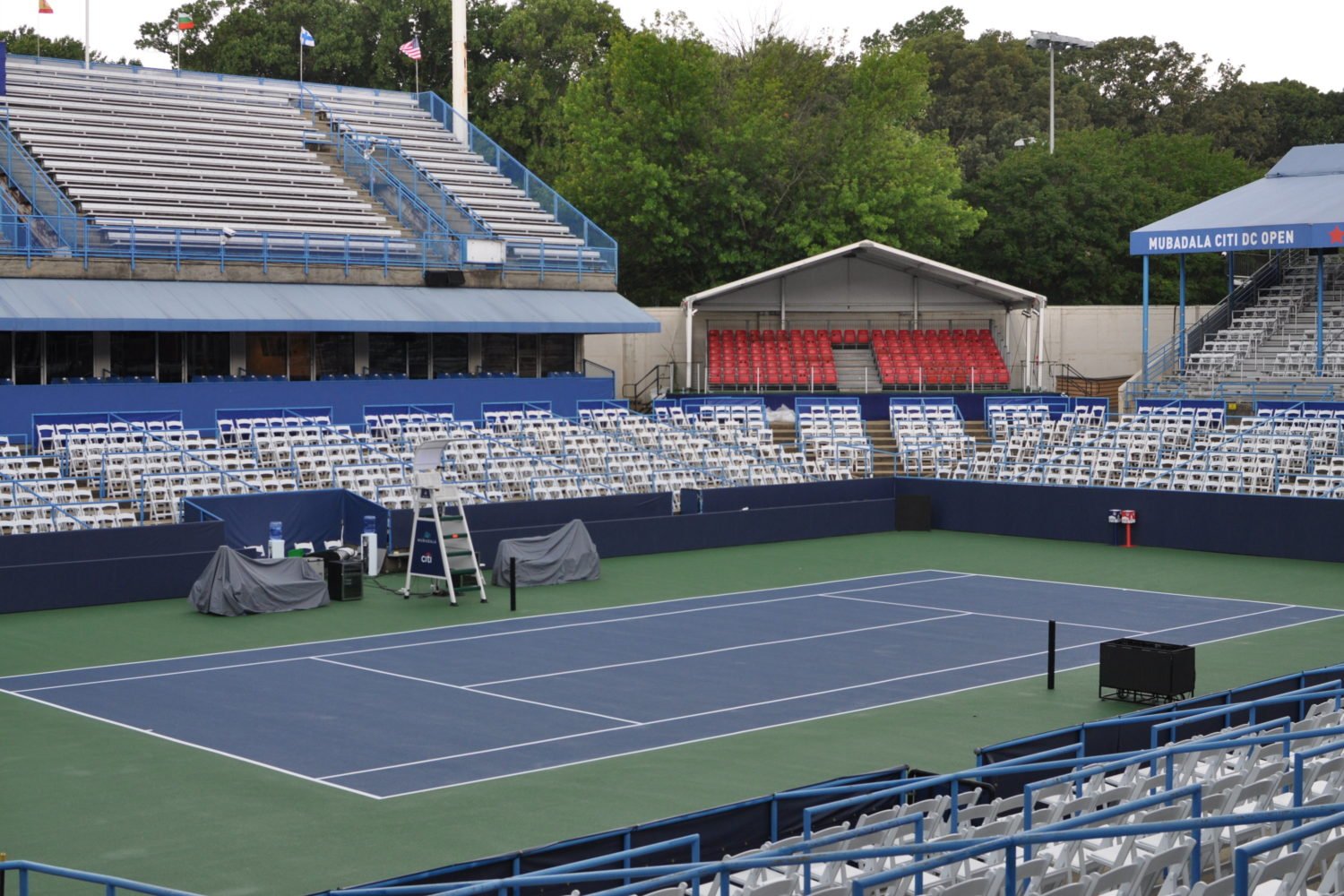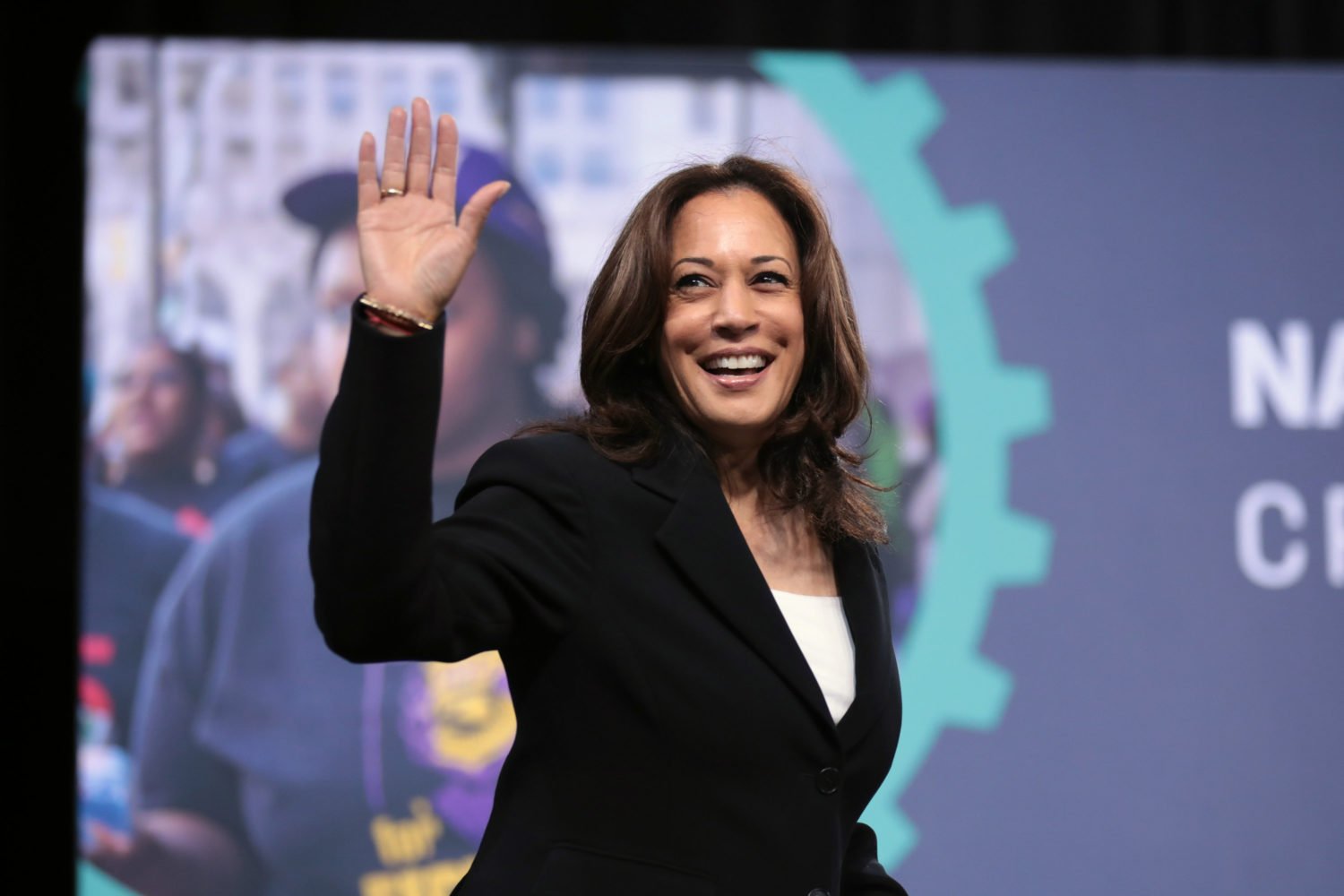In so many ways, Kate, who was born in 1987, is a perfect reflection of the opportunities and hardships of being young today. She’s smart and motivated and has a degree from an Ivy League school, yet at 25 she worries she’ll never attain the status or lifestyle of her boomer parents. She majored in political science and has a burnished social conscience, something she honed teaching creative writing in a women’s prison. But Kate’s most salient—and at this point, defining—generational trait might be that she doesn’t have a full-time job. Instead, she has been an intern for a year and a half.
Kate moved to DC after dropping out of her first year of law school. She has cycled through one internship at a political organization and another at a media company and is now biding her time as an unpaid intern at a lobbying firm. To make ends meet, she works as a hostess in Adams Morgan three or four nights a week, which means she often clocks 15-hour days.
“I don’t mean to sound like I have an ego, but I am an intelligent, hard-working person,” Kate says. “Someone would be happy they hired me.”
It’s a refrain heard many times from the millions of twentysomething Kates who are scrambling to find jobs with a steady paycheck and benefits. Mostly, though, they want to find a way out of the low-paying—or nonpaying—apprenticeship track. For Kate, it feels more like an internship vortex.
After all, who wants to still be an intern at an age when you should have a 401(k) and a modicum of job security, or at least be earning more than you did at your summer job during high school? “People my age expect to start at the bottom,” Kate says, “but in this economy the bottom keeps getting lower and lower.”
Welcome to the slow, sputtering economic recovery, Generation Y.
• • •
When I ask Kate how many jobs she’s applied for, she says: “Like a million.”
Desperate as she is, the Department of Labor doesn’t consider her to be unemployed, because she has two jobs. Instead, Kate, who often works more than 60 hours a week, is in a class of workers who don’t show up in government reports. She’s one of the “permaterns”—those perpetual interns, mostly in their twenties—who have been battered by the winds of the recession and are holding out hope that the conventional career wisdom that an internship leads to a job isn’t folklore from a bygone era—like the 1990s.
The serial intern isn’t unique to our region. You can find young people languishing at film studios in Los Angeles and magazine empires in New York City. Similarly, Washington’s job pyramid, at least in many industries, often doesn’t start at entry level; it starts at internship. Our area is now home to one of the largest intern-industrial complexes in the country, one that extends well past the bustling summer months.
When Young Invincibles, a youth-advocacy organization in DC, posts a job opening, it gets hundreds of applications. Says cofounder Aaron Smith, 30: “I’m blown away by the number of back-to-back internships and how hard it is to go from an internship into a full-time paid position.”
This is where the permatern phenomenon starts to point toward wider trends in the economy—namely the cutthroat competition for knowledge-economy jobs, the lack of investment in this generation, and the skills gap between what a generation weaned on a liberal-arts education is trained for and what the in-demand skills and professions are right now (i.e., not another poli-sci or English major). The result? For many in Washington, the American dream starts with a highbrow internship that pays $4.35 an hour—then another, and maybe another.
• • •
That’s how much Jessica Schulberg, 22, made for the ten months she worked at the Woodrow Wilson International Center for Scholars, a haven for academics and journalists researching public-policy issues. Every month, before taxes, Jessica was paid a stipend of $700, supplemented by waitressing and bartending at Mr. Henry’s on Capitol Hill.
“I felt like ten months was a long time to be there,” says Jessica, a 2011 graduate of the University of California, Santa Barbara. But with only a bachelor’s degree, she felt she wasn’t qualified for many entry-level jobs, a suspicion confirmed by numerous rejections. The places where she was applying—think tanks and nonprofits—were all “receiving a million applications from people just like me,” she says.
So Jessica went with plan B: two years of graduate school at American University to earn a master’s in international politics. A partial scholarship made the decision easier, but Jessica says she’ll have to go into debt to cover some of the $50,000 a year in tuition. She’ll graduate next year.
Somewhat amazingly, Jessica is upbeat about her situation. The internship at the Wilson Center, a coveted and prestigious position, made her feel like one of the lucky ones. During her longer-than-anticipated stint, she assisted foreign-policy heavyweights like Michael Adler, a foreign correspondent for Agence France-Presse, on a book about diplomacy in Iran. She did research for Mark Mazzetti, a national-security correspondent for the New York Times.
“My friend and I joke that we got paid to read and write about topics that we’re interested in,” says Jessica, an aspiring foreign correspondent.
But talking to her, I wonder: When did “lucky” become working for below minimum wage for months on end? Jessica doesn’t pause when I ask her this—it’s clearly a bargain she has mulled many times: “You either do what you like to do for free or you have an entry-level job for $25,000 where you answer the phone and are someone’s assistant. It’s this weird compromise people my age have to make.”
If you want to work in the foreign-policy arena, as many bright college graduates do, there are some major barriers to entry. And Jessica has made peace with them—mostly.
• • •
Has it always been this hard to break into even the most competitive jobs in DC?
In a word, no.
Take Mazzetti, 38, Pulitzer Prize-winning journalist and author of the forthcoming book The Way of the Knife: The CIA, a Secret Army, and a War at the Ends of the Earth. Jessica was his research assistant at the Wilson Center.
When he was starting out in the late 1990s, Mazzetti interned at the Economist’s Washington bureau. “In the old days, there were internships in journalism that gave paths to more regular jobs,” he says. For example, his internship turned into a “super-stringer” position that sent him to Austin, Texas. “I could pay the rent, and it was a blast,” he recalls.
“It does seem like, in general, it is harder to get anything full-time and permanent in Washington now because of the economy,” Mazzetti says. “Young and incredibly smart people have to take jobs for no money or very little money.”
Internship coordinators around town say they’re seeing more applicants with advanced degrees and previous internships than in the past. At the Heritage Foundation, the conservative think tank, about seven young people apply for each $7.25-an-hour intern slot. Those positions are coveted because many see a Heritage internship as an entry point into other policy or law jobs in DC, says Heather Pfitzenmaier, director of the foundation’s Young Leaders Program.
But the full-time jobs that are supposed to follow a prestigious internship aren’t as plentiful as they once were. “At the end of 2007, every intern had a job lined up,” Pfitzenmaier says. Now more are going on to another internship after the Heritage Foundation stint.
Similarly, a 2012 study by Millennial Branding, a research and consulting firm aimed at Generation Y, found that while 91 percent of the 225 surveyed employers said students should have one to two internships before they graduate, half of the employers hadn’t hired any interns in the previous six months. In other words, internships don’t always lead to a job offer.
That means that a lot of twentysomethings are layering internships in their immediate post-college years and not landing a real full-time job until they’re at least 24 or 25—so a chunk of this generation is deferring their earning potential for at least half of their twenties.
To get one of the most sought-after internships—the kind you need before you can get a job with benefits—it’s increasingly necessary to have apprenticed somewhere else first. At the Corcoran Gallery of Art, for example, which gets around 250 applicants and accepts 6 to 15 each fall, spring, and summer, those with prior internships have an advantage, says Susannah Brown, who until recently was the museum’s internship coordinator.
Aaron Smith of Young Invincibles wonders if all these apprenticeships are working against his generation. When prospective employers see internships of long duration, they might understandably wonder: Why didn’t the person get hired by the organization after working there for a year?
Smith takes a more forgiving stance: “Usually, it’s just a case of people holding out for a job opening that didn’t pan out.”
Those internships that offer a pathway to a full-time position are that much more competitive. At the Atlantic Media Company, which publishes the Atlantic and several other magazines, Katherine Cusani-Visconti, senior vice president for talent and culture, says a high percentage of fellows move into other roles in the organization. But an internship at the company—which includes an educational component and “full immersion” into one of the business units—is among the toughest to land: The company receives 1,000 résumés for 25 positions. That’s about a 2-percent acceptance rate.

After hearing these numbers, I could begin to understand why Jessica felt lucky. Maybe she is fortunate to be earning $4.35 an hour at her ivory-tower job while she works nights and weekends as a waitress. Maybe a ten-month paid internship followed by graduate school and then perhaps another internship is the new lucky, particularly at a time when so many young people can’t find work at all. At the Wilson Center, Jessica met other interns who were graduate students and spoke multiple languages. It didn’t seem far-fetched, Jessica says, to think she’d hit the job jackpot.
Still, I wondered: Where was the anger at the injustice that a smart young woman couldn’t find a permanent job and had to keep prolonging her $4.35-an-hour internship?
She wouldn’t be the first to rail against today’s intern culture. In February, Xuedan Wang, then 28, sued Hearst Corporation—which owns Harper’s Bazaar, where she had been an unpaid intern—for violating labor laws through its internship program. (According to the Department of Labor, unpaid internships are supposed to be educational and exclusively for the benefit of the intern, not the employer.) Her lawyers have turned the case into a class action against Hearst, and there have been other similar class-action suits, including one against Fox Entertainment Group that is scheduled to go to trial this spring and another that Charlie Rose settled with former unpaid interns on his PBS talk show.
“Once upon a time, companies used to invest in entry-level workers,” Wang said in an interview with the website Ed2010. “They used to train them and spend money investing in employees, and they don’t do that anymore. They’re just using interns more and more to do entry-level work.”
But Jessica is on the other end of the spectrum from Wang, and perhaps more representative of the permaterns in Washington. “I don’t think you can be angry,” she says. “It’s just how it is. People older than me are struggling.”
Sometimes, though, the disappointment hits her—a cocktail of feelings. The combination of finding out that the payoff for going to a good college is elusive, the reality of being told for two to three years after graduation that you aren’t qualified for a low-level job, and then having to go into debt to get qualified.
Ross Perlin, 29, author of Intern Nation: How to Earn Nothing and Learn Little in the Brave New Economy, a scathing look at the internship culture, views the situation as much more insidious. “Low-paid and unpaid work is the new normal,” Perlin says, “and if you can’t do those internships you may be totally shut out of certain fields. How is that fair?”
• • •
The economics of being a permatern are pretty brutal. Thanks to the Affordable Care Act, Jessica can stay on her parents’ health insurance until she’s 26, defraying a major expense. Without that safety net, it’s unclear what she’d do—either forgo health insurance or ask for a subsidy from her parents, who fortunately can afford mini-bailouts for their daughter. Still, Jessica says she feels squeezed—and forget about squirreling away for a rainy day or retirement. “It’s frustrating to work 60 hours a week, be really tired, and not have any money,” she says.
To keep costs down, Jessica lives in DC’s Eckington, where her share of the rent for a group house comes to $650 a month. Before that she lived in Petworth, and when her mother came to visit from a posh suburb of San Diego, Jessica says her mom wasn’t happy about how “dilapidated” the house was and expressed concerns about safety.
Otherwise, she says, her parents are supportive: “They’re not the type to tell you just to get a job. They’re happy to help with rent.”
And therein lies one of the greatest divides between the haves and the have-nots of twentysomethings in this city. Can your parents cover some of your living expenses while you take one low-paying—but potentially career-building—internship after another?
• • •
The job market hasn’t always been structured in a way that requires college graduates to work for less than a barista for months or years on end. Perlin says that before the internship boom, in the 1950s and ’60s, the expectation was that the government, companies, and universities would invest in young people and that they, in turn, would pay the investment back by becoming taxpayers and active members of society.
“There has been a cultural shift toward something more sinister—that you have to invest in yourself and we are each out there on our own,” Perlin explains. “There is no idea of a social investment in our promising young people. Increasingly, you invest in your own human capital or your family does. There is no sense of shared responsibility.”
But aren’t there jobs for Kate, Jessica, and the hordes of other serial interns? Don’t they just need to lower their sights? No one, after all, is forcing them into professions that make getting into Harvard, with its 6-percent admissions rate, look easy. Isn’t this just another example of the entitled Gen Y attitude that sees some work as beneath them?
I ask Kate about that. “I’ve tried really desperately to find work,” she says. “If I wanted to, I could go back and work retail and get paid on commission. But that doesn’t lead me anywhere. The restaurant offered me something full-time, but that’s not a field I want to go into.”
Kate maintains she isn’t holding out for the perfect job but will wait until she gets a career-building job—a luxury she has as the child of 1960s idealists, and, more important, one with no student loans. “My parents are the two most remarkably supportive people,” Kate says. “They know I’m trying as hard as I can.”
At her last internship, at a media company, working for an “abusive boss” (the whole staff was terrified of her, Kate says) and measly pay went down easier for Kate, a political junkie, because sometimes when she went on a reporting assignment she would be standing two feet from Representative Nancy Pelosi, one of her heroes.
Permaterns spotlight what is evident to anyone who has ever applied for a job in Washington: The types of positions that a liberal-arts degree primes you for—as an aide on Capitol Hill or at the State Department, the Washington Post, the Center for American Progress, the American Enterprise Institute, or the World Bank—are nearly impossible to land.
Into a bad economy, we’ve graduated a generation pining for unpaid internships at environmental nonprofits that receive 900 applicants for a single position. So many twentysomethings who come to Washington aspire to join professions that require a herculean effort to break into, offer low starting salaries, and already have a glut of young people willing to slave for practically nothing just to get a foot in the door. Kate points out that, according to a recent poll, her college major—political science—is among the least employable due to a saturation in the marketplace.
Not everyone in the generation, thankfully, awaits such a fate. Jessica’s brother, who is 28 and a mechanical aerospace engineer at SpaceX, a company that designs and manufactures spacecraft and rockets, used to tell his younger sister he couldn’t understand why she’d work for next to nothing. He has been gainfully employed and making more than he needs since the day he graduated from college, Jessica says.
So here’s another chasm in the twentysomething cohort: the one between the liberal-arts kids and the engineering and science majors, who may have never had such starkly contrasting employment options. “Engineering is an in-demand skill,” Jessica says to me in an e-mail. “International relations/policy kids are a dime a dozen, so the intern pay difference makes sense in that regard.”
Yes, good old supply and demand. But we can’t all be rocket scientists or engineers, nor should we.
The reckoning is that a prolonged internship is just the new normal for young people with aspirations of getting a cool Washington job, even for those who have advanced degrees from the most prestigious schools in the country.
• • •
In 2011, when Robert Vega, 25, a George Washington University and Harvard Law graduate, went to the Senate Placement Office, the first stop for aspiring Hill staffers, the woman who interviewed him said he was the third lawyer to come in that day. He was willing to take anything, even an entry-level position. Vega describes the job-search process in Washington as “one big competitive mess.”
Vega, however, was lucky. He had decided after some soul-searching that the big law firm wasn’t for him, so he went to Capitol Hill, giving up a six-figure salary. His internship in the office of Representative Kenny Marchant, a Texas Republican, turned into a temp job after two months and then a staff job three months after that. “I was surprised, given the degrees I had under my belt, that I had to intern,” Vega says. He calls it “humbling” to be an intern in his mid-twenties with a law degree from Harvard. But at least it was a paid position—he made $1,000 a month and supplemented that with savings.
The expectation that one’s career should be fulfilling is another reason why the mid-twenties, or even early-thirties, intern has become a familiar sight in Washington offices.
“People in this generation, despite the recession, are looking for what they really want to do, so they take a hit in the form of an internship to land one of those coveted jobs that pays the bills and is fun,” says Ryan Healy, cofounder of Brazen Careerist, a career site in Northern Virginia.
But Smith, who spends a lot of time analyzing youth unemployment, sees permaterns to be more a result of the economic rug’s being pulled out from under this generation. “The economy needs to add a really high number of youth jobs over the next ten years to get us back to where we were before,” he says. And employers in the nonprofit and media sectors—and yes, even government—aren’t going to be the engine of growth for the economy.
There are also policy levers that need to be pulled, Smith argues: “The federal government spends less than $2.5 billion annually to provide job training and workforce readiness for young adults. That’s very little.” In 2011, the US spent $718 billion on defense- and security-related activities and $731 billion on Social Security, according to the Center on Budget and Policy Priorities.
Like others, Smith sees a mismatch between the jobs that are available and what young people are seeking and trained for. “We just did a youth conference in Dallas on Science, Technology, Engineering and Math (STEM) education. There is a huge demand for [people in those fields] and we don’t produce enough of those graduates to fill that need,” Smith says. “Students need to be more cognizant of the labor market.”
But as long as Washington continues to be a hub of politics, media, nonprofits, and development agencies, young people will continue to flock here to elbow their way into the region’s über-competitive ecosystems. They just might find that interning for a year or two is part of the long, hard slog into the permanent, full-time workforce. Or they’ll give up or go with plan B, as Jessica did.
How long will working for no, or very low, pay be acceptable? In the United Kingdom, Perlin says, young people have reacted very differently to internships: “There has been a lot of outrage about people working for free. It’s quite a bit newer to the social contract there.”
Of course, labor laws in Europe are much stricter than they are here, and Perlin doesn’t see any massive uprisings on the horizon in the US. Still, he thinks most young Americans view the current setup of the job market as unfair: “They just don’t think there’s anything they can do about it.”
On the bright side, Lauren Berger, founder of InternQueen, a website that partners with more than 1,000 US companies to help students find internships, says she isn’t seeing serial interns as much as she did during the peak of the recession in 2008 and 2009. Berger, a kind of motivational and tough-love personality, says that when she gets e-mails from people who have been interning for four years, she replies, “Enough with the internships already.”
If only some had that choice.
Hannah Seligson is author of “Mission Adulthood: How the 20-Somethings of Today Are Transforming Work, Love, and Life.” She can be reached at missionadulthood.com.
This article appears in the February 2013 issue of The Washingtonian.


















